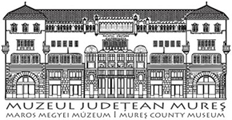Marisia - Maros Megyei Múzeum Évkönyve 32/2. (2012)
Articles
A Perished Medieval Settlement in Udvarhelyszék 165 influence of Transylvanian Saxons and certainly point to the presence of a more emancipated class of households. About 23% of the materials found inside the features filling were created on slow potter’s wheels. On the bottom of one of the thin walled pots, made from a granular material, we could observe the craftsman’s seal. The pots made on fast potter’s wheels had been fitted with covering mortises, and many had their sides decorated with horizontal lines. Alongside the pottery, a fragment of an iron knife and an iron hoop were also uncovered (PI. 19/12-13). We noticed the trace of feature 5 during the excavation in the south western corner of the trench. The pit itself barely went into the clay layer and so we only managed to observe its bottom. Its filling was dense grey brownish, mixed with chunks of coal and wattle-and-daub, from which we recovered 14th century pottery fragments thinned with granular sand, made on fast potter’s wheels. The round trace of feature 6 was found in the north western corner of the trench. The bottom of the deep stilt pit was horizontal, its filling dense, with some wattle-and-daub chunks. Part of the items recovered date back to the late Migration Period, and beside these there were also grey and brown, sand thinned pot fragments, made on slow potter’s wheels, and decorated with engraved lines, which dated back to the later part of the Árpád dynasty period. Trench 5 We opened trench 5 along the axis of the previous trenches, 5.5 m south of number 4 and its size was 5 x 1 m. Here, at a depth of 15-30 cm, we also found a layer containing traces of medieval culture, from which we recovered a considerable amount of 14th-15th century vessel fragments, as well as fragments dating back to the late Migration Period (Pi. 10/10-11), the Árpád dynasty period and the late middle ages, but in much smaller numbers (Pi. 11/13-14). We reached the clayey subsoil at a depth of 30-50 cm. We did not notice any traces of features in the trench. Analysis of the materials has revealed however that there are some remains of 14th-15th century features nearby. Trench 6 We opened trench 6 north of number 3, along its axis, on a 1 x 5 m surface. In this trench we did not find traces of the medieval culture layer. Beneath the layer of ploughed soil we found a brownish grey layer of sub-humus. Almost half of the items found here date back to the 14th—15th centuries, while the other half of the worn items dated back to the other periods in mostly similar proportions. The round trace of feature 9 was found in the northern segment of the trench. Only the southern part of the stilt pit was excavated. Its filling did not contain any archaeological artefacts. In the southern part of the trench we noticed traces of stakes with 10 cm diameters, in pairs, with approximately 50 cm between them. Trench 7 We opened trench 7 at 10.5 meters from number 3, on an east-west axis, with a 1 x 5 m size. We did not notice the intensive medieval layer in this trench. Most of the recovered materials date back to the late Migration Period (PI. 10/12-13), which is suggested by the nearby feature dating from this period. The bottom of one of the handmade pots had been perforated, and it was used as a spindle weight. We did not notice any traces of features inside the trench.
